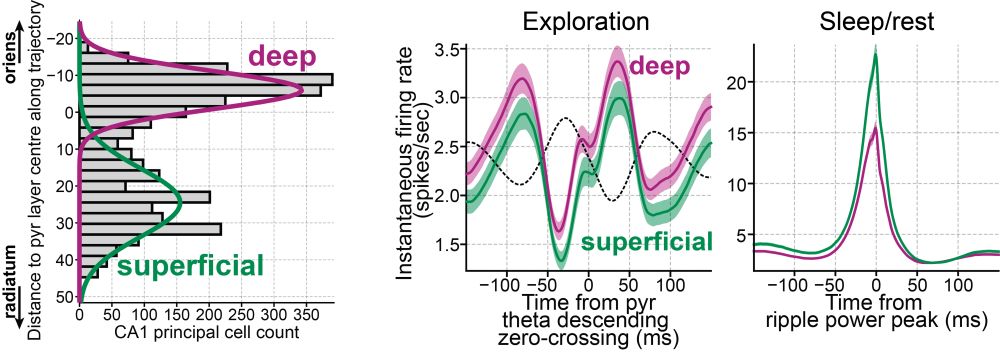The tetrode follows the predicted path, and the gamma profiles match the silicon probe data beautifully at each step.
See one going from CA1 pyr to DG midmol below!

The tetrode follows the predicted path, and the gamma profiles match the silicon probe data beautifully at each step.
See one going from CA1 pyr to DG midmol below!
I’ll be updating it soon with a newer Python version and more data!
(13/13)

I’ll be updating it soon with a newer Python version and more data!
(13/13)
It started as a side project to support various experiments in the lab, but it grew into its own thing.
Huge thanks to Demi and David for working with me on this at @mrcbndu.ox.ac.uk, and to our reviewers for helping improve the paper.
(12/13)
It started as a side project to support various experiments in the lab, but it grew into its own thing.
Huge thanks to Demi and David for working with me on this at @mrcbndu.ox.ac.uk, and to our reviewers for helping improve the paper.
(12/13)
We mapped oscillations and neuronal firing across CA1–DG layers.
This opens new doors for identifying oscillations, circuit motifs, and homogenize layer identification across datasets.
Check out the paper: doi.org/10.1016/j.ce...
(11/13)
We mapped oscillations and neuronal firing across CA1–DG layers.
This opens new doors for identifying oscillations, circuit motifs, and homogenize layer identification across datasets.
Check out the paper: doi.org/10.1016/j.ce...
(11/13)
CA3 terminal stimulation strongly activated pyramidale (PyrInt) and radiatum (rad) interneurons, while EC terminal stimulation strongly drove LM interneurons.
(10/13)

CA3 terminal stimulation strongly activated pyramidale (PyrInt) and radiatum (rad) interneurons, while EC terminal stimulation strongly drove LM interneurons.
(10/13)
Firing behavior was layer-specific; e.g., LM interneurons were barely active in ripples.
Preferred theta phase also varied across layers.
(9/13)

Firing behavior was layer-specific; e.g., LM interneurons were barely active in ripples.
Preferred theta phase also varied across layers.
(9/13)
By projecting tetrode LFPs from several mice onto the embedding (estimating each tetrode’s “depth”), we recover gradually changing theta and ripple waveforms, as if recorded with a single linear probe.
No need for alignment or histology. Just the signals and the embedding.
(8/13)

By projecting tetrode LFPs from several mice onto the embedding (estimating each tetrode’s “depth”), we recover gradually changing theta and ripple waveforms, as if recorded with a single linear probe.
No need for alignment or histology. Just the signals and the embedding.
(8/13)
These groups differ in firing rates (awake and sleep), theta modulation, and coupling to gamma and ripple.
This let us replicate findings from fancy silicon probes using tetrodes, and extend them further.
(7/13)

These groups differ in firing rates (awake and sleep), theta modulation, and coupling to gamma and ripple.
This let us replicate findings from fancy silicon probes using tetrodes, and extend them further.
(7/13)

